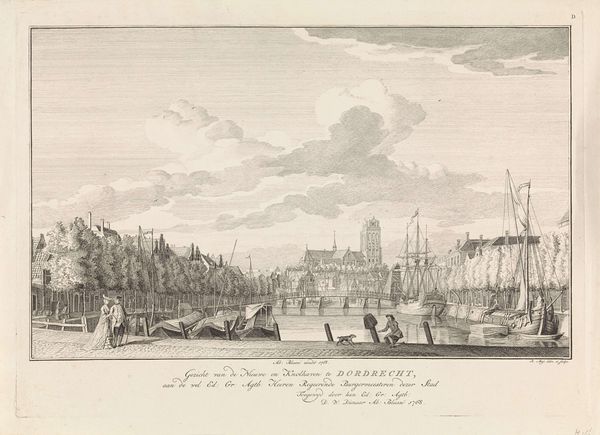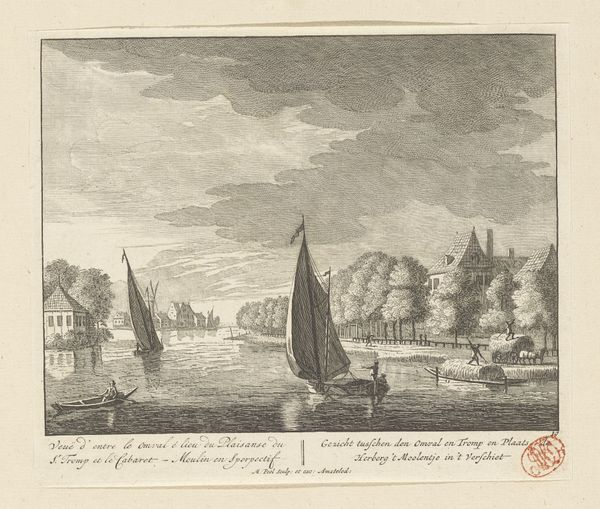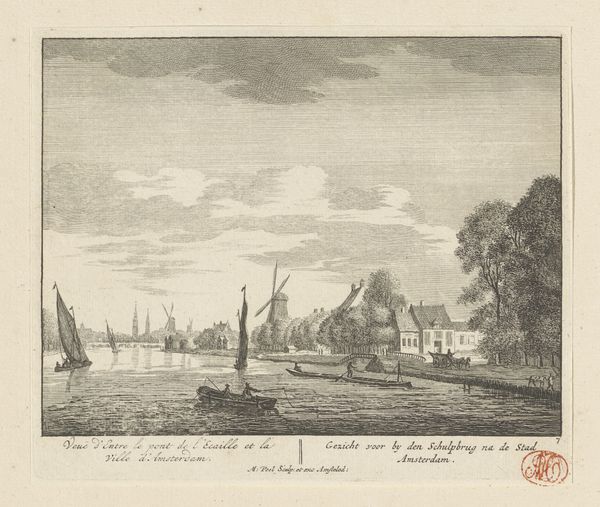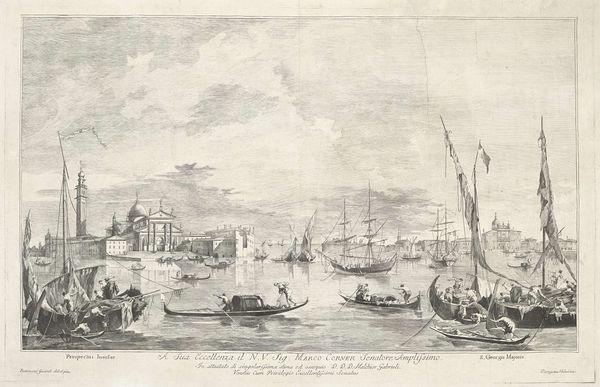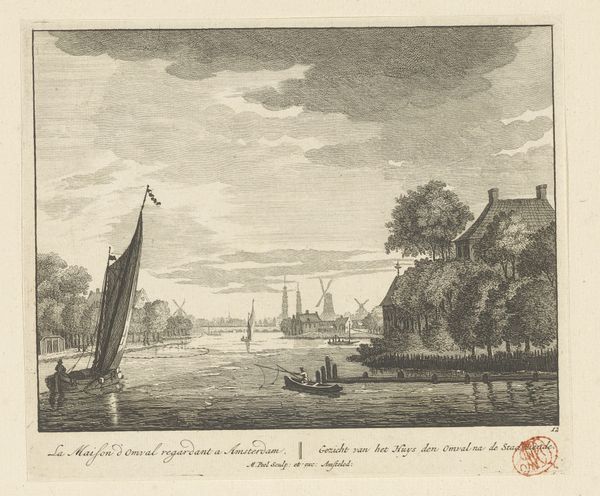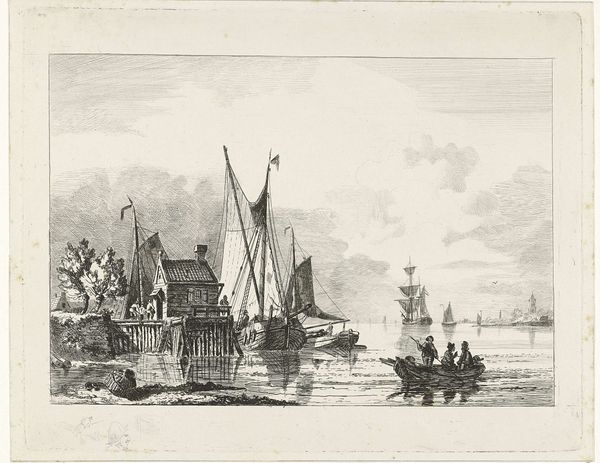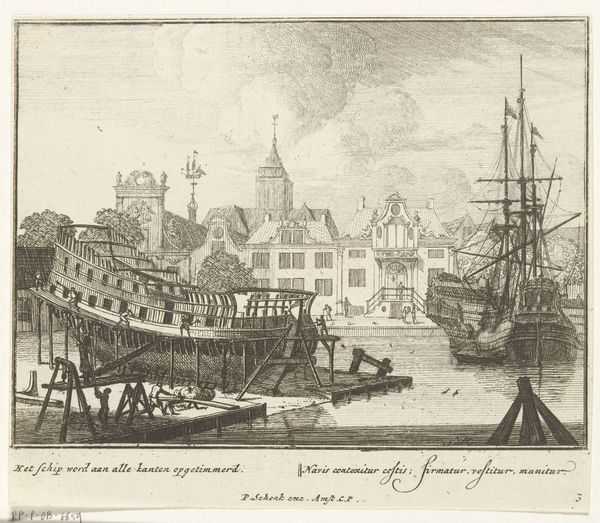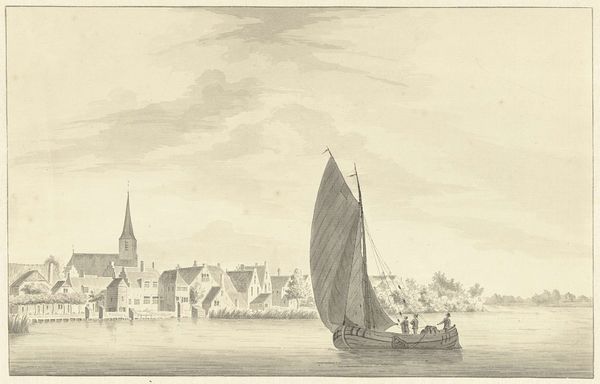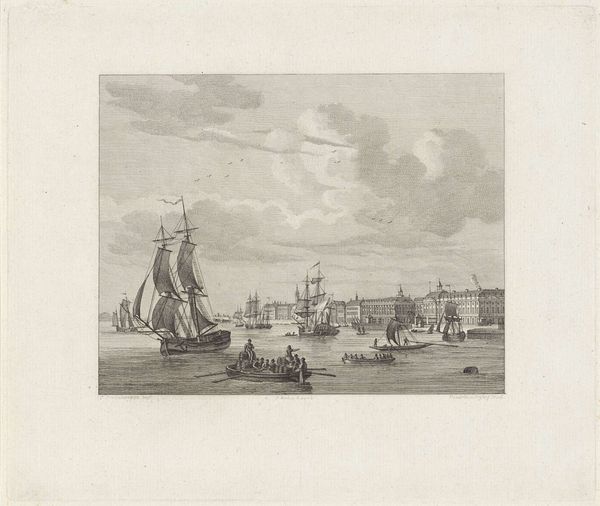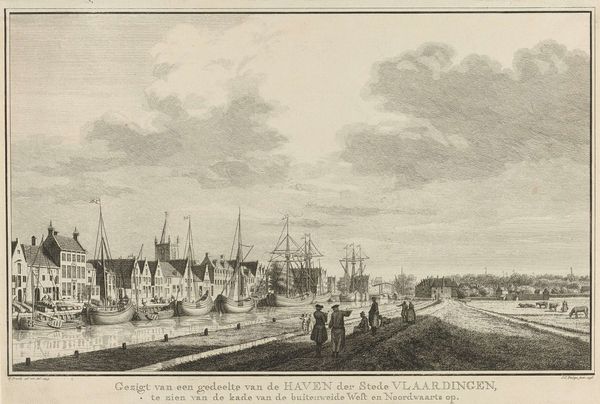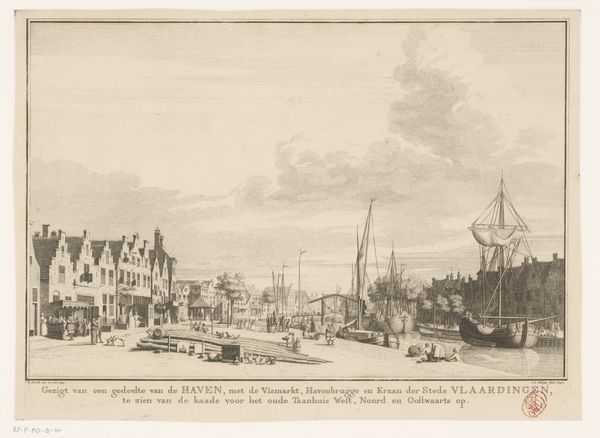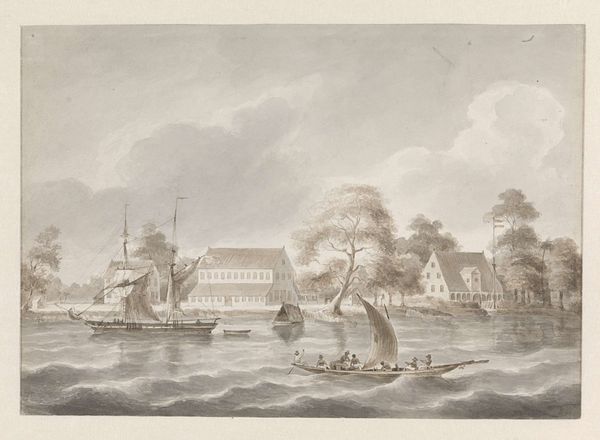
Dimensions: height 303 mm, width 425 mm
Copyright: Rijks Museum: Open Domain
Robbert Muys made this print of Dordrecht in the 1700s. Look closely, and you can see it was made using an etching technique. A metal plate, likely copper, would have been coated with wax, and then the artist would have used a sharp needle to scratch away the wax, exposing the metal underneath. This is then bathed in acid, which bites into the exposed lines, creating the image which can then be printed onto paper. The success of an etching relies on a collaboration between the artist and materials, and the artist’s own labor. You can see a division of labor represented here: the artist who designs the image, the etcher who renders it in print, the papermaker, and the printing house all collaborate to create this final product. It's easy to miss, but this division of labor is a key part of what this image depicts. As it captures a bustling port city, the etching reflects the same processes of commerce and industry that it represents.
Comments
No comments
Be the first to comment and join the conversation on the ultimate creative platform.

